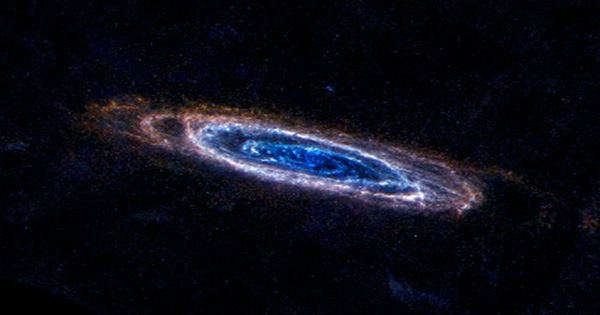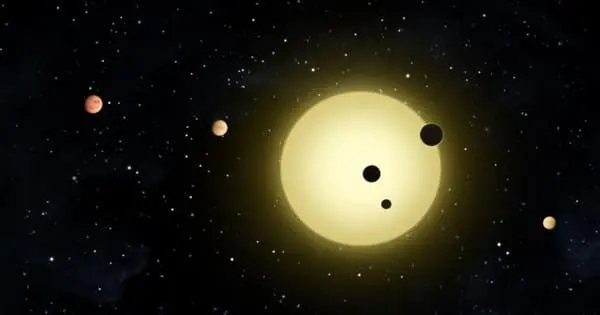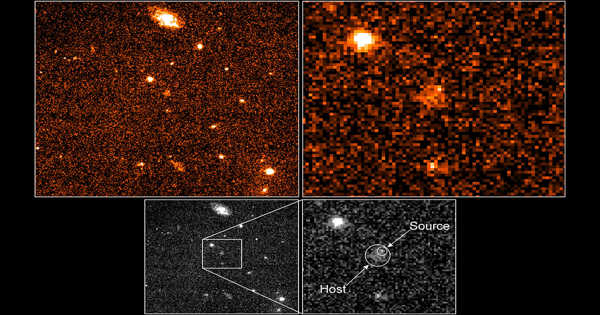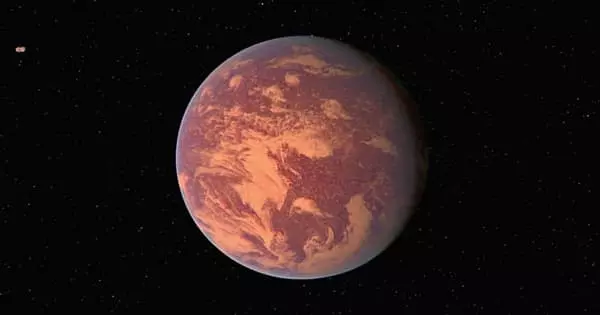Kepler-22b is an exoplanet that orbits the Sun-like star Kepler-22 within its habitable zone. It is a super-Earth that might be covered by a super-ocean. It is around 600 light-years (180 pc) from Earth in the constellation Cygnus. It was discovered in December 2011 by NASA’s Kepler Space Telescope and was the first known transiting planet to orbit within the habitable zone of a Sun-like star, where liquid water might exist on the planet’s surface. Kepler-22 is too dim to be visible with the naked eye.
The radius of Kepler-22b is almost twice that of Earth. Its mass and surface composition are unknown. The planet’s makeup is not Earth-like. It is expected to have a volatile-rich composition with a liquid or gaseous outer shell. The only parameters of the planet’s orbit that are currently known are its orbital period, which is roughly 290 days, and its inclination, which is approximately 90°. Evidence implies that the planet has a moderate surface temperature, given that the surface is not subject to significant greenhouse heating. In the absence of an atmosphere, its equilibrium temperature (assuming an Earth-like albedo) would be roughly 262 K (- 11 °C), compared to Earth’s 255 K (- 18 °C).
The planet’s first transit was observed on 12 May 2009. Confirmation of the existence of Kepler-22b was announced on 5 December 2011.

Physical characteristics
Kepler-22b is an extrasolar planet that orbits the Kepler-22 star. It is located in the constellation of Cygnus, approximately 620 light-years (190 pc) from Earth. It was detected on December 2011 by the Kepler Space Telescope.
Mass, radius and temperature
The radius of Kepler-22b is approximately 2.4 times that of Earth. Its mass and surface composition are unknown, with only extremely imprecise estimates: less than 124 Earth masses at the 3-sigma confidence limit, and less than 36 Earth masses at the 1-sigma confidence limit. Kipping et al. (2013) used a model that does not reliably detect the mass (the best fit is 52.8 MEarth).
Kepler-22b, termed a “water world” by scientists, may be a “ocean-like” planet. It may also be akin to the water-rich planet Gliese 1214 b, however Kepler-22b, unlike Gliese 1214 b, is in the habitable zone. Radial velocity measurements of the system rule out an Earth-like composition to at least 1-sigma uncertainty. It is thus likely to have a more volatile-rich composition with a liquid or gaseous outer layer, comparable to Kepler-11f, the smallest known gas planet. Natalie Batalha, a scientist on the Kepler Space Telescope project, speculated, “If it’s primarily ocean with a little rocky core, it’s not out of the realm of possibilities that life may survive in such an ocean.” This possibility has spurred SETI to perform research on top candidates for extraterrestrial life.
In the absence of an atmosphere, its equilibrium temperature (assuming an Earth-like albedo) would be approximately 262 K (−11 °C), compared with Earth’s 255 K (−18 °C).
Host star
Kepler-22 is a G-type star that is 3% less massive and 2% smaller in volume than the Sun. It has a surface temperature of 5,518 K (5,245 °C), which is higher than the Sun’s surface temperature of 5,778 K (5,505 °C). The star is around four billion years old. The Sun, by contrast, is 4.6 billion years old.
Kepler-22 has an apparent magnitude of 11.5, indicating that it is too faint to be viewed with the human eye.
Orbit
The only parameters of the planet’s orbit that are currently known are its orbital period, which is roughly 290 days, and its inclination, which is approximately 90°. From Earth, the planet seems to transit over the disk of its host star. Other planetary detection methods, such as the radial velocity method, must be utilized to gain more information about the specifics of the planet’s orbit. While such approaches have been used on the planet since its discovery, they have failed to detect an accurate value for the eccentricity of the planet, leaving astronomers with just an upper bound on the planet’s mass (as of March 2012).
















